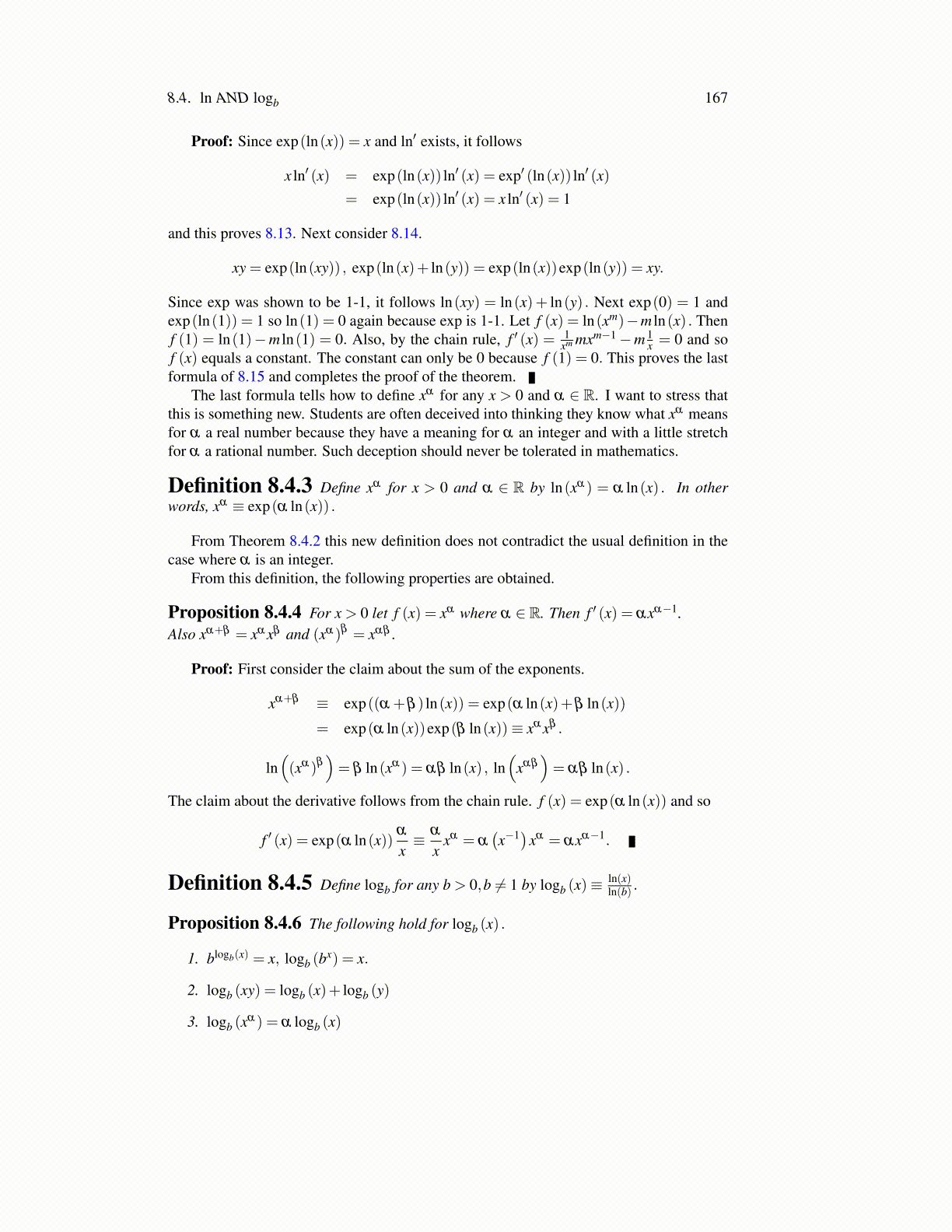
8.6. THE BINOMIAL THEOREM 167
Example 8.6.1 Find a Taylor series for the function (1+ x)α centered at 0 valid for |x|< 1.
Use Theorem 8.2.1 to do this. First note that if y(x)≡ (1+ x)α , then y is a solution ofthe following initial value problem.
y′− α
(1+ x)y = 0, y(0) = 1. (8.16)
Next it is necessary to observe there is only one solution to this initial value problem. Tosee this, multiply both sides of the differential equation in 8.16 by (1+ x)−α . When this isdone, one obtains
ddx
((1+ x)−α y
)= (1+ x)−α
(y′− α
(1+ x)y)= 0. (8.17)
Therefore, from 8.17, there must exist a constant, C, such that (1+ x)−α y = C. However,y(0) = 1 and so it must be that C = 1. Therefore, there is exactly one solution to the initialvalue problem in 8.16 and it is y(x) = (1+ x)α .
The strategy for finding the Taylor series of this function consists of finding a serieswhich solves the initial value problem above. Let y(x) ≡ ∑
∞n=0 anxn be a solution to 8.16.
Of course it is not known at this time whether such a series exists. However, the process offinding it will demonstrate its existence. From Theorem 8.2.1 and the initial value problem,(1+ x)∑
∞n=0 annxn−1−∑
∞n=0 αanxn = 0 and so
∞
∑n=1
annxn−1 +∞
∑n=0
an (n−α)xn = 0
Changing the variable of summation in the first sum,
∞
∑n=0
an+1 (n+1)xn +∞
∑n=0
an (n−α)xn = 0
and from Corollary 8.2.2 and the initial condition for 8.16 this requires
an+1 =an (α−n)
n+1,a0 = 1. (8.18)
Therefore, from 8.18 and letting n = 0, a1 = α, then using 8.18 again along with this
information, a2 =α(α−1)
2 . Using the same process, a3 =
(α(α−1)
2
)(α−2)
3 = α(α−1)(α−2)3! . By
now you can spot the pattern. In general,
an =
n of these factors︷ ︸︸ ︷α (α−1) · · ·(α−n+1)
n!.
Therefore, the candidate for the Taylor series is
y(x) =∞
∑n=0
α (α−1) · · ·(α−n+1)n!
xn.
Furthermore, the above discussion shows this series solves the initial value problem on itsinterval of convergence. It only remains to show the radius of convergence of this series